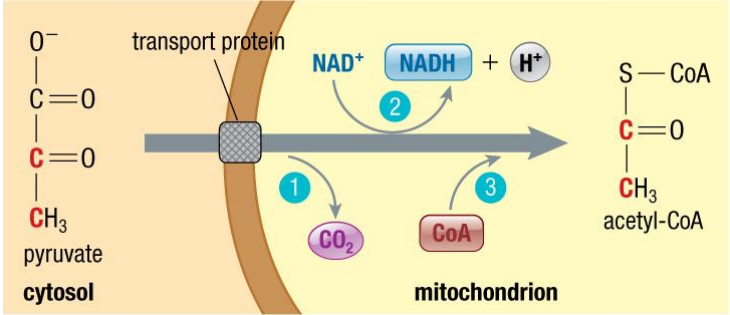4.2 Pyruvate Oxidation
- Extraction of the remaining free energy in the pyruvate molecules from glycolysis (& the citric acid cycle)
- DECARBOXYLATION – removal of carboxyl group (COO-)
- Released as CO2 (waste)
- Turns Pyruvate → acetyl group
- 1/3rd of CO2 we exhale
- Followed by oxidation of the remaining two carbon molecules, producing an acetyl group
- DEHYDROGENATION
- Transfers 2e and 1p o NAD+ → NADH
- Releases H+ into solution (extra)
- Acetyl bonds to coenzyme A →ACETYL-COA
2 pyruvate + 2 NAD+ + 2 CoA → acetyl-CoA + 2 NADH + 2 H+ + 2 CO2

- Large pores in outer membrane allow pyruvate through
- For inner membrane a pyruvate specific membrane carrier is required
- Once in the matrix, it converts into an acetyl group
- which is then temporarily bonded to a sulfur atom on the end of a large molecule called coenzyme A, or CoA.
- The result is an acetyl-CoA complex.
So far…
Glycolysis yields:
- 2 ATP (net)
- 2 NADH
Pyruvate Oxidation yields:
- 2 NADH (1 for each pyruvate)
- [[Isnt acetylcoa a yield??[[
Now, acetyl-CoA enters the citric acid cycle